Slow Food Edmonton’s Dairy Farm Fieldtrip
Save On Foods sure missed out when they told Hennie Bos at Bles-Wold Dairy that there is no way they could make yogurt in an old barn like this and rejected Bles-Wold’s bid to sell in their stores. One Save On Foods in Sherwood Park took the risk and successfully sells their product, but head office at Save On rejected our famous local Little Engine that Could! Bravo to Hennie and Tinie! I know they would give Save On a second chance, should they come crawling back asking for forgiveness, but this booming little “side” business for this Central Alberta immigrant family is growing like wild fire and has brought such a sense of satisfaction to Tinie Ellers as she radiates joy talking about the birth of her yogurt and sour cream business.
Last Sunday, September 26th, I had organized an Edmonton Slow Food Dairy Farm Fieldtrip for Slow Food Members and friends. It was a drizzly morning, but when I arrived to the bus at 8 am with ample Thermoses of Transcend Coffee brewed to perfection, there were already people in the bus! Moreover, the bus was already there, and I was actually a minute early! I set up my little table, covered it with a cloth and got out the coffee, orange juice and name tags. Just as I was inviting all to come out of the bus for a fresh cup of coffee and some juice, Vanja arrived with the fresh-out-of-the-oven bag breakfast from Duchess Bake Shop: perfect timing.
Giselle had planned a savoury and a sweet scone for our early morning trip: cheese with peppers and blueberry with lemon. Both were outstanding. Thank you, Duchess! The coffee was also really welcomed in this drizzly weather, and I do believe I did Transcend justice with my home brewing as I loved it and some came back for seconds!
We are off! What a friendly group of like minded people. Who else would spend a Sunday visiting a couple of Alberta Dairy farms?
As we drove South toward central Alberta, my breath was taken away as it always is this time of year. What beautiful country we live in. For those of you not familiar with Alberta, this is definitely a side road. We have turned off the major highway and are headed out toward Sylvan Lake to Sylvan Star Cheese. There was so much interesting conversation, that it took no time to arrive.
I planned this trip because I wanted to visit everything on the schedule and it seemed like the perfect thing to do. I had wanted to visit this Cheese Manufacturing Farm for a few years. I was really delighted when I saw the building that they have on their website. “We are here!”
All needed a moment to stretch and then we were invited into the Tourist area: a lovely shop and luncheon area just newly built for people like us. There was some initial confusion which I don’t care to dwell on. (We were to visit the Dairy Farm here, too, but the plans were changed and somehow, no one let me know.)
Jan greeted us and had the cheese ready for a tasting almost immediately. Going anywhere the first time is always a great learning experience for a guide. I have taken students to Europe for years, and after the first one or two, they all went like clockwork. Jan and his wife had prepared lovely platters of their award winning cheeses for our group to taste, but they were all on two platters and there were 40 of us. About 10 of us didn’t get any of the cheese. More was put out, but only three kinds. That was disappointing, but the teacher in me would definitely do that differently next time, and it would not happen as it did. No one complained. The group was such a positive group of people. And, the cheese is some of the best in the world. We are so fortunate to have Sylvan Star Cheese in our province.
Just look at that medium Gruyere, below. I never allow myself to be out of it. It is so delicious in sauces and tarts, and to just eat like this. Vanja loved it, too.
Their Aged Grizzley Gouda is another of my all time favourites. It has won a best Gouda in the world award. This family immigrated here, from Holland, and though they didn’t plan to continue making cheese, I am sure glad they are.
Jan took us upstairs and told his story. It is a story of a family immigrating to a new country to Dairy Farm. Alberta offered the perfect place for his dream. Once here, he could not find any good local cheese, and definitely had brought 30 years of cheese making knowledge with him. He really wanted to leave that behind, and do something different. However, the niche was there, unfilled, and he recognized it. The rest is history, but not an easy route. Alberta doesn’t have many artisan cheese makers. The health inspectors don’t have the experience and knowledge they need to monitor this kind of business here. They have it all figured out in Quebec. Why can’t our political leaders and our Food Inspection agency take some lessons from them. Their culture nurtures the artisan cheese farmer; ours intimidates it according to Jan’s stories and his experience with cheese making in Holland compared to here.
We were all nibbling on incredible cheese and thoughtfully paired crackers listening to an intimately personal story of a family creating a new life in a new world.
We moved through a huge empty room that will eventually be used to store and age the Grizzly and then down the stairs to the work and storage area. The first impression was that it was absolutely spotless. Everyone commented on that as we were touring and afterwards. In the past, over the years, Sylvan Star has run out of Grizzly. Thus, the new storage room preparation and the greater inventory. Jan said they will not be running out again!
This is the storage and waxing room. The white rounds in the foreground to the right are not waxed at all, yet.
Jan is explaining the storage of the cheese and the humidity of the room. I am in awe and wiggling with excitement to be in such a room.
I sure hoped Vanja was listening as I was exploring and just lost in the rows and rows and rows of cheese.
The sprinkler above is for misting the room to keep the humidity at the correct level. It is all hand monitored and does not come on automatically.
And here I am, playing and being caught. That’s where my cheese plate went. I lost it enroute and was really sad about that!
We are in the waxing room again, beside the brining tank. The various kinds of cheese are all lined up and, well, irresistible. Two of my favourite local Edmontonians were participating with us, today: Mack and Sharon.
When the Smoked Gouda was passed around for sniffing, noone could resist. Please forgive my shaky photos. I was quivering with lust for this cheese!
Jan demonstrated how the rounds are waxed: all by hand. The wet wax is rubbed into the cheese with a sponge 3 times a day for 4 days (every other day) over an 8 day period. Clearly, a labour intensive project when looking at the vast amount of cheese stored in the building.
The cheese sweats as it ages (see the mark on the wood, below, right?), so it needs to be turned over often through the waxing process and once the process is finished, there will be no more “sweating”.
I do tend to prefer everything natural, or plain, but this family really has it going on with their flavourings. The flavoured cheeses are incredibly delicious and possess a perfect balance of creaminess and cheesiness with the spices and herbs and peppers.
I had not seen their Edam. It is the rectangular cheese. I didn’t know they made this until I was on their web site. I guess I didn’t investigate their booth at the City Market as well as I should have this past summer. They also sell locally at Planet Organic and Sunterra Foods.
Below is a close up of an unwaxed Gouda right out of the mold.
The true colour is closer to the photo on the right, above. But the lighting changed the colour in the photos.
The logo is also waxed in under many layers of wax. Here is Cathy and her husband. They didn’t bring their camera and I insisted on taking their picture. Everyone of the few I took was shaky! But, look at that cheese!
Below is the brining tank that the molds of cheese go into. Miss Brûlée Blog was taking notes, so I hope she heard (or someone else, please chime in!) how this tank was used, and at which phase of the process. I did ask again, but didn’t understand the answer.
Katharine was another participant that I was able to get a lovely photo of with steady hands.
Jan took us into another room where he has the cold smoke apparatus. He smoked 20 cheeses at the time and left them in six to eight hours. They have a luscious smokey to-die-for aroma! Their Smokey Gouda is another award winning cheese.
He uses maple wood to smoke the cheese. It comes in these small packages and the machine and process is very easy to maintain, according to Jan.
Below is the room that 8000 litres of milk at a time comes to fresh from the milking barn. It is pasteurised and then put into a huge vat with a culture and stirred until the curds form. At this point, the curds are separated from the whey and placed into molds to cure. Each 8000 litres of milk produces 800 kilograms of cheese, or Jan gets 10% of the volume of his whole milk product in cheese.
Below he is standing over the huge oblong vat to demonstrate how he actually does this work when the pasteurized milk is mixed with the culture and then stirred with the knives. Though he does have this incredible equipment, the work still involves a great degree of manual labour. Throughout this process, he stands over the cheese and monitors the knives and equipment, working it, in a bent 45 degree position. I asked him if it was back breaking work. He said that it is, but that he is fit and that his back is strong and it does not get sore.
The photo below is blurry, but will give you a good idea how big the tank is.
You can see the pipes over the vat, or tank, and the knife blades move into position over the tank. The milk is poured into the tank through the pipes from the pasteurizer.
Here are the molds. I wanted one. I am not sure why. I really did.
This is another vat or tank for a smaller batch of cheese with a different culture. The sinks on the side are clearly for cleaning all supplies.
Below, left is the pasteurizing panel. The milk comes in from the tank truck and is piped right into the pasteurizing pipes which are a labyrinth around the back of this room. To the right are some interesting pieces of equipment that I wished I had asked about, but didn’t notice until the room had cleared.
Another view of the large vat or tank, below, from the door where the truck brings the milk in.
Turning around, here is the truck tank that holds that 8000 litres of milk from two angles.
Time for lunch. Seriously. After learning how to make the cheese, all I wanted to do was eat it, and actually participate in making it. The lunch provided by Sylvan Star was wholesome and delicious. Massive sandwiches with Blackforest ham, Edam cheese, and focaccia bread were served with a hearty tomato based soup.
The soup was so warm and satisfying I forgot to take a pic until it was almost gone. People shopped and then ate, or ate, and then shopped.
There were a lot of culinary treasures to ogle.
The cheeses, fresh eggs, and cultured butter were the stars of this show. Sylvan Star opened just for us on this Sunday, and we are really glad they did. I had no idea they made their own butter, and now I am a fan. That is another peeve of mine: there is no locally made butter available in our city.
Below, right, Sherene in front of the facility. It is so big, I couldn’t get in the entire building.
Back on the bus, and in no time we were a half hour down the road turning into Bles-Word Dairy Farm, our next planned visit.
I was immediately charmed by the picture-perfect farm house and yard, including the white fence and a Canadian Flag! Those are llamas in the corral.
Hennie and Tinie met us so warmly as we were scrambling out of the bus. (Tinnie is the woman to the right with the folded arms.)
We were divided into two groups of 20: one went with Tinie and one with Hennie. I went with Tinie; Vanja went with Hennie.
Tinie told us her amazing story of creating this local yogurt company. This couple also immigrated from Holland in the 1990’s. Hennie had a huge dairy business with 250 cows and Tinie was a teacher planning on teaching once settled here. However, she started making yogurt for her diabetic daughter, and that grew into a Farmer’s Market business. The last day of the market in 2000, the manager of the local Co-op Shopping Centre asked her if he could carry her product in his store. Very shortly thereafter, her product found its way into over 200 stores throughout Alberta. But, only one Save-on Foods Store, as you have heard!
Monday the milk comes in, is pasteurized and separated from the sour cream and the culture is added to make the yogurt. Tuesday the yogurt is packaged and Wednesday it is delivered. The same process happens Wednesday through Friday: Wednesday the the milk comes in, is pasteurized and separated from the sour cream and the culture is added to make the yogurt, etc. Tinnie gets the weekends off! Kind of.
Her company is very small compared to her husband’s she said. The entire farm has four staff members and there are three family members that work at the farm, too. The yogurt facility has 5 staff members, including Tinnie and for each litre of milk Tinie gets one litre of yogurt. She does 2800 litres of milk two times a week right now.
Hennie explained the Dairy Farm end of the business. In Alberta, dairy farmers must buy their quota from another dairy farmer who is retiring, or going out of business. There are currently 600 Dairy Farmers in Alberta and most have an average of 125 dairy cows. Hennie has 250. His son in law runs the farm. Hennie is on the federal Milk Board and spends a good deal of his time in Ottawa.
Hennie sells to Saputo (Dairyland), one of the three big Dairy Milk buyers in our province. The other two are Parmalat and Beatrice. He said he was happy with the arrangement and compensation from this company. We were talking about the advantages of Supply Management during my session with him and someone asked what the dairy farmers share is of the consumer dollar. Hennie said it was the highest in the Northern world and guessed it was close to 50%. He later sent us this information from a report just out after our tour:
Keystone Agricultural Producers (Manitoba) and Agricultural Producers Association of Sask and Wild Rose Agricultural Producers (AB) released, just recently, their 3rd Annual “The Farmers’ Share Report” prepared by Dr. Alma Kennedy. The study concludes that over the last 3 years the average prairie farmer’s share of the food basket is 27.1 %. (This is considerably lower than his estimate and my question would be: Is he still happy with his return from Saputo?) This percentage varies greatly depending on the food group. For dairy: The dairy farmer’s share of a 250ml glass of milk at a restaurant, costing $2.25 is 9.4%; of a medium pizza costing $17.70 the dairy farmer receives 67 cents; for a liter pack of store milk the farmers share is slightly higher.
This is the tank (above, right) where the farm fresh milk is poured into and then used in the Yogurt Making, inside the barn facility.
After hearing from Hennie and Tinie, it was raining quite hard, so we scooted over to the building on the left, below.
They had it all set up with milk and juice and cookies and brownies and all varieties of their individual yogurts! Vanja was lapping them up. They truly are delicious. While I prefer plain, it is not sold in the small packaging, yet it is their biggest seller. French Vanilla is their biggest seller in the flavours and their fruit flavours are sourced out of their farm, but still Alberta made. Their sour cream is 18% and Tinie chose this as it was a higher percentage that already available, thus creating a niche market following. This farm family is definitely tour savvy. They had government booklets on milk, recipe booklets, a print out for their yogurt business and a lovely black and white cow motif bag from moreaboutmilk.com and the Alberta Dairy Council.
Inside of this barn, as well as our treats, were the young cows: such a great introduction to the Dairy industry!
The calf, below, right, is trying to nurse another young calf unable to provide any milk, of course. These young calves pull so hard on the teets, that they actually damage them for life.
Thus, the nose ring, that goes on a few young ones with that sucking fetish to ensure that they cannot damage the teets of the future dairy cattle.
These little fellows were about a week old. Vanja was taken by one cutie.
Below, left was a little Holstein calf just born the day before! Oh, Oh! There is that naughty calf sucking again!
Now the tour of the dairy barn. That was a massive education. Have times ever change in this industry since my childhood! There are about 250 cows in this barn. Half of them are milked manually, but this is still done by machine. The other half milk themselves. Yes, it is true. I had to see it. I had no frame of reference for a robotic milker. But wait! What is that red spaceship like looking vessel in the distance, below?
We are all gawking at it in disbelief. Hennie and Tinie had not prepared us for this. The space ship looking vessel is a robotic “cow-barn sweeper”. As the cows feed, they push the feed away from themselves. This smart little robot moves up and down the barnyard corridor pushing the feed back toward the cows. Incredible!
Most of the cows were friendly. The looked at us and tried to engage us with their eyes or their nodding and welcoming gestures. I was amazed at their curiosity and friendliness. The bull, below, left, was enormous. He had a sore foot, too. He looks too big to even move! Hennie assured the group that this big fella knows what to do when he needs to do it, and he is very good at it, too. (blush) I was taken by R-2 D-2. I was trying to engage in a robotic conversation, but he just whipped right by me focused on sweeping the feed back to the cattle.
Looks like someone needs to get some relief! The robotic milker cleans its lines three times a day whenever it is determined needed and is then out of service for 45 minutes. The cows line up. They like how it feels, and they are also rewarded by feed.
Can you see that? R-2 D-2 has a child! This smaller version of the sweeping robot moves bravely behind the feeding cattle and sweeps up their “messes” ! Isn’t that wild? A robotic toilet cleaner for the barnyard! Brilliant!
On the other side, there was the automatic “cow wash”! Thos big green brushes that scrub over your car as they rotate were twirling here in the barn. Engaged by the cow as she backs into it and gets a good old back scratch. “AH! This is the life!”
Below the cows are lining up for the robotic milker to open.
If a cow is ill, its milk is redirected to a special bin (below, left) and not used. Look at the love one of the cows is giving Cathy. I got a kiss, too: very, very scratchy tongues…. and the feces dripping out of their noses is quite off putting. Otherwise, their little pink snouts are downright nuzzley!
What a beautiful animal. She even knows how to turn on the tap to get a drink. Hennie says the Holstein is almost over bred as a super producer of milk.
More cattle are outback in two other facilities.
When the robotic milkers stopped the self cleaning cycle, Hennie invited us in to see the cows milk themselves from a close-up-and-personal view behind the machines. Each of these machines is about 150 thousand dollars.
I thought I had captured really great photos, but they are almost impossible to understand unless you were there. The cow walks up and stands over the milkers. The laser finds the teet, then washes, brushes and cleans it before latching the milker onto it.
You can see the milk come into the tube below, far right.
The video below explains the process and gives and excellent understanding of this amazing technology. Hennie has two of these machines.
httpv://www.youtube.com/watch?v=1Vo4NJU5wTk&feature=related
Below, left is the room we were viewing the robotic milking from, and the instruments on the right are used on the other side of the barn for the manual milking.
Here is the set up for the manual milking. I am not sure how it is done, but I believe the cows are hooked up to the milking machines a few at a time, and then milked by the machines.
I truly hope that the group that attended will chime in with their special “remembers” and moments of this day. There was too much for me to include everything! The sun is fighting with the clouds, as we wave farewell, and head back North toward Pigeon Lake and our dinner destination: Eco Cafe. Chef Tim is famous in this neck of the woods for his use of local and wild products.
I think I don’t take enough time to commune with nature. The scenery both there and back was heart stopping perfection.
Here we are. It seems like all we have done is eat all day, but we are eager for more!
The appetizer was Smoked Prairie Trout with a cold pressed canola oil mousseline in a corn and sweet pepper crepe accompanied with local organic greens, and candied beets in a yogurt maple dressing. I loved it all. The beets were like candy. I love beets, especially this time of year.
The entrée was Bison Short Rib Ragout served over goat cheese mashed potatoes with oven roasted sweet root vegetables and everyone lapped it up!
Honestly, I found the goat cheese too strong in the potatoes, but I think it was just me.
As we were not including dessert, I baked some cookies: Chocolate Cherry Hazelnut Cookies and Breakfast Cookies. Mack took the photos, and when he sends them to me, I will include them here. Other photos are included in the cookies recipe pages of our travellers!
So, with cookie in hand, tummies full, and spirits completely edified after this day of visiting two amazing farms and meeting two very dedicated and warm farm families, we climbed into our seats on the bus for the last leg of our journey. And, yes, the sun was shining on us now. The day was bursting forth in its full glory.
Ok, just a little photo shop enhancement. The photos remind me of the old Ideal Magazines I used to dream into when I was a child. How I loved them. And today, the country side is golden and heavy with the bounty of the harvest season.

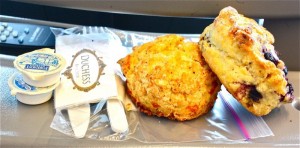
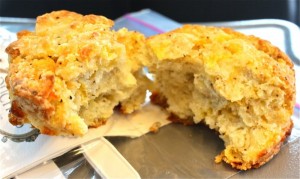
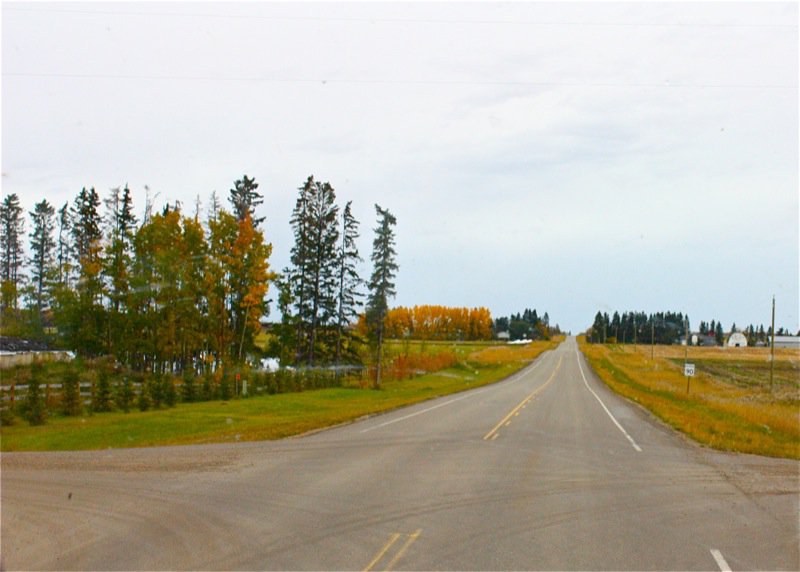


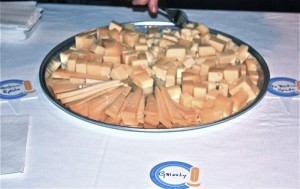
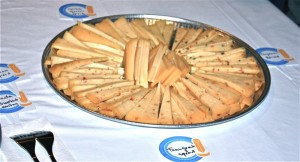
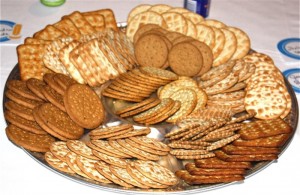

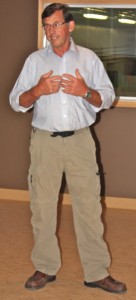
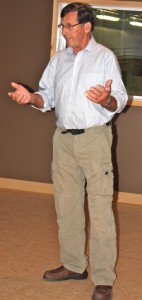
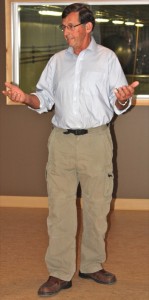


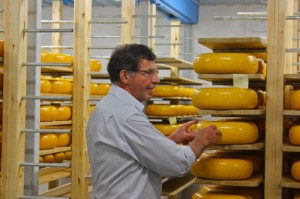




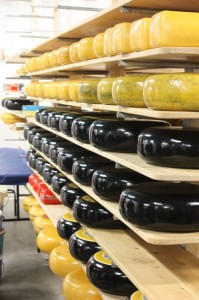
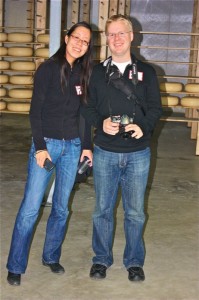
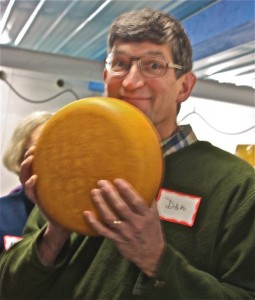
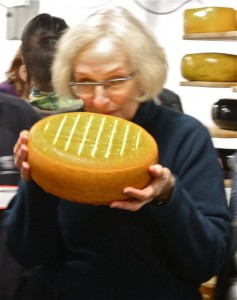
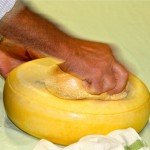
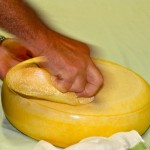
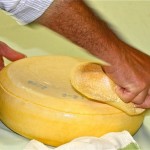
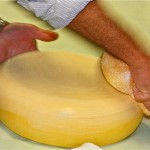
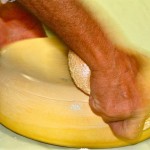
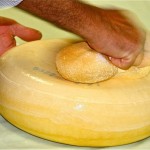
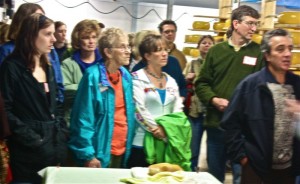
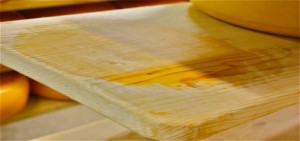

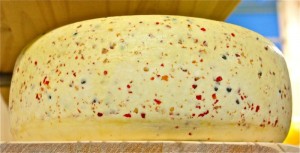
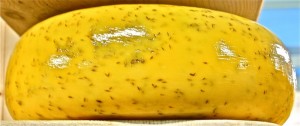
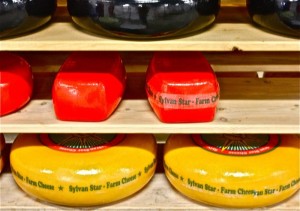
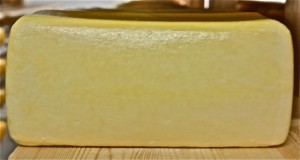

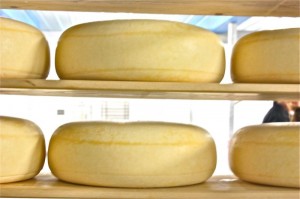
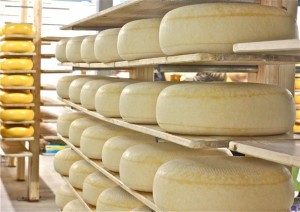
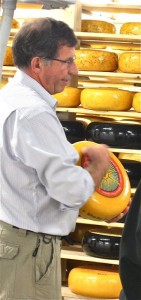
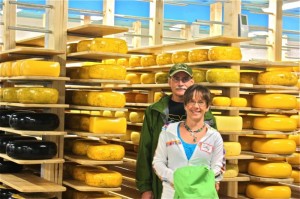

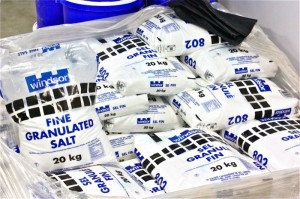
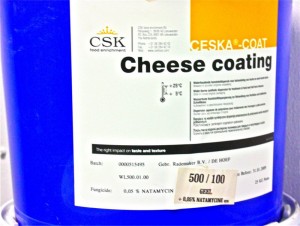

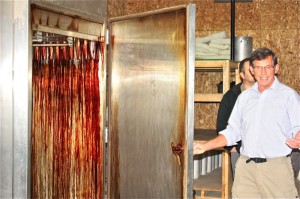
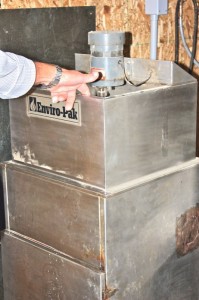
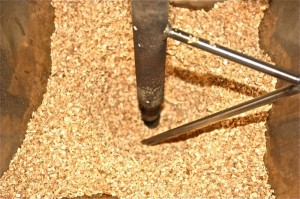
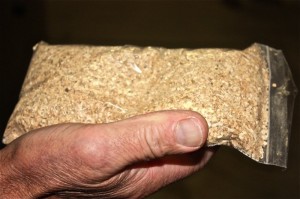
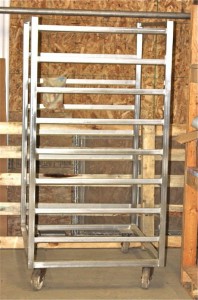
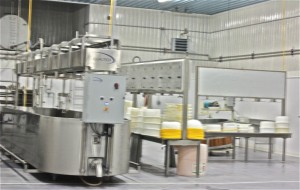



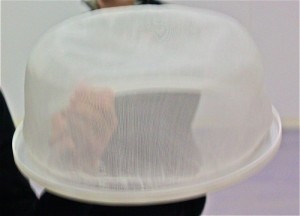
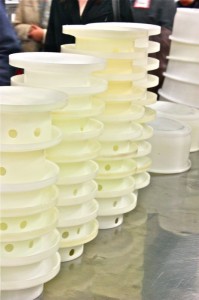
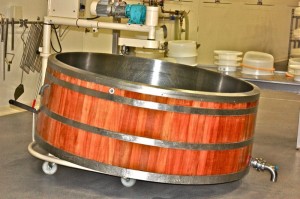
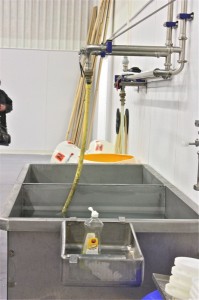
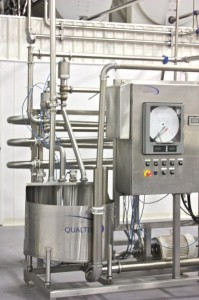
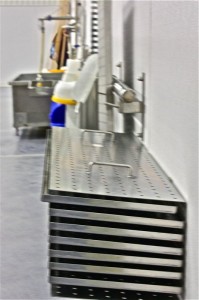

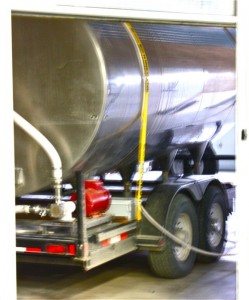
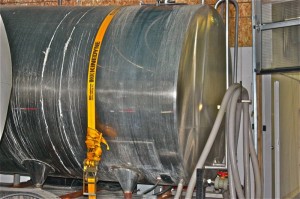
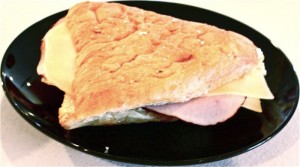
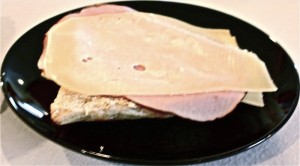
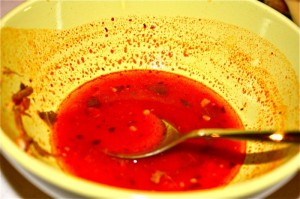
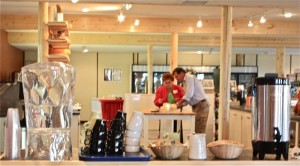
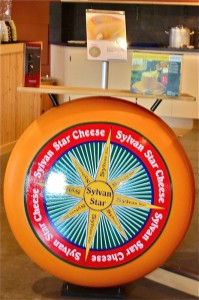
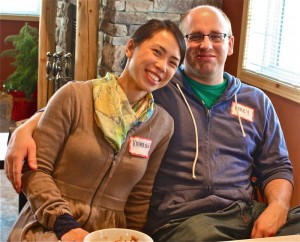
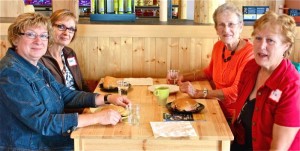
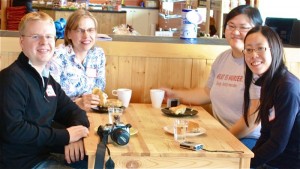
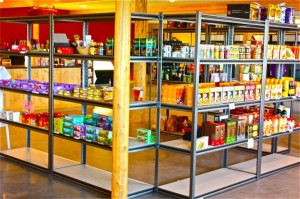
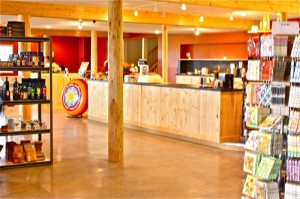

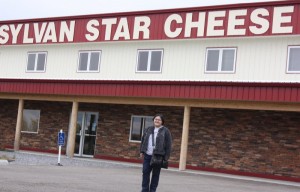
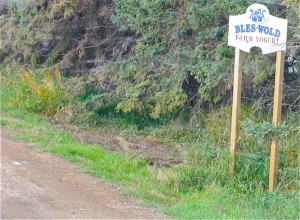




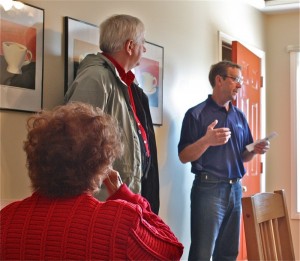
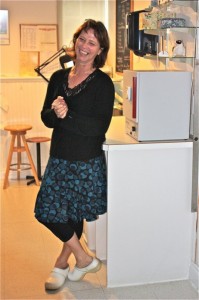
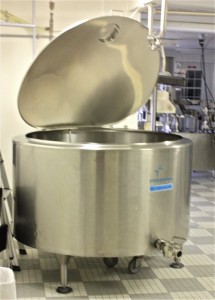
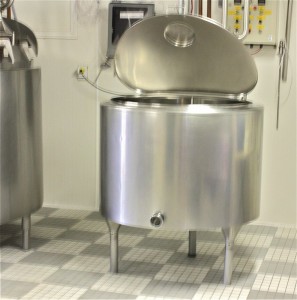
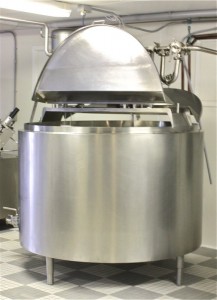
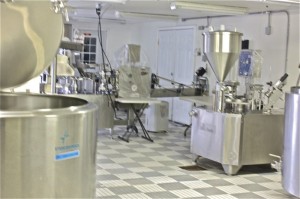
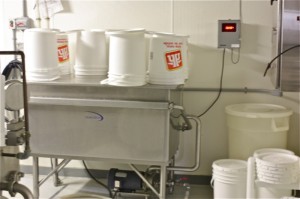
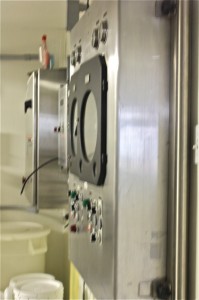
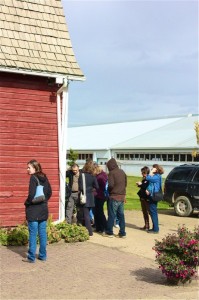
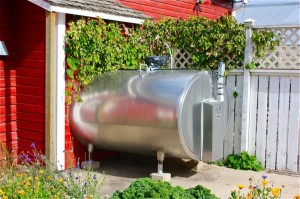

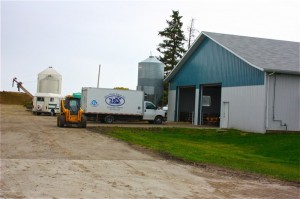
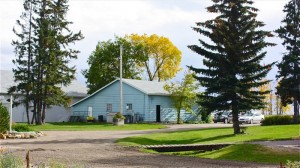


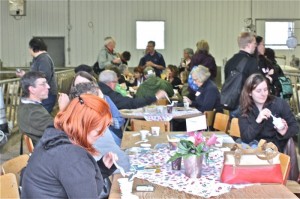
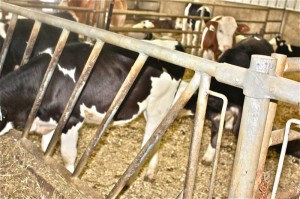
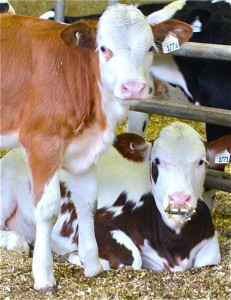
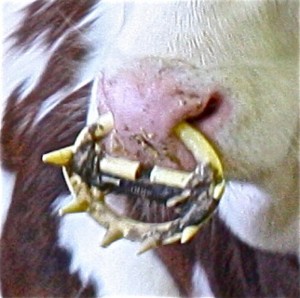
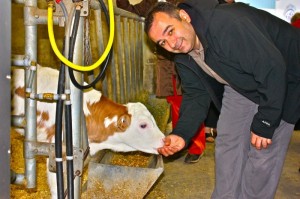
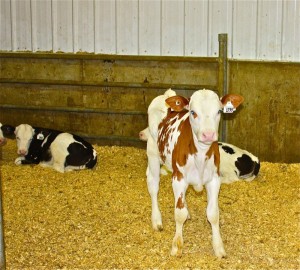
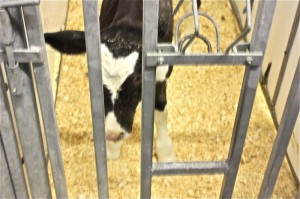
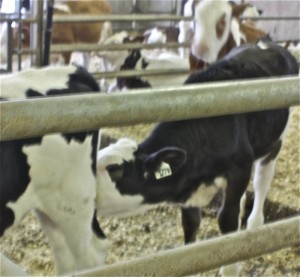


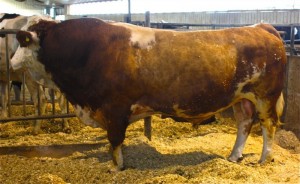
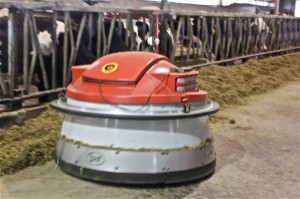

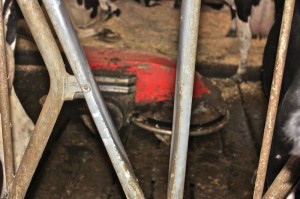
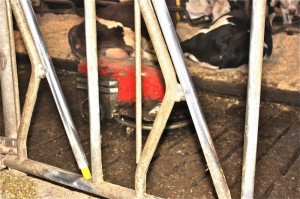


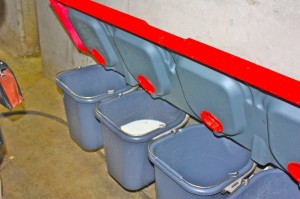
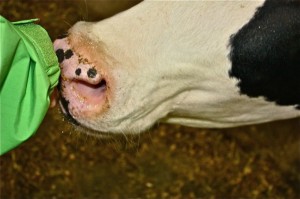

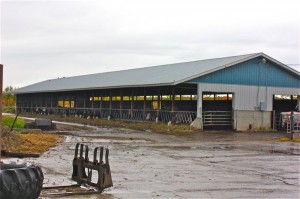
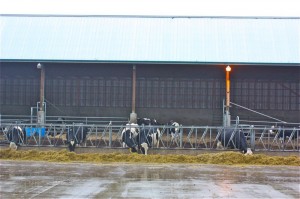

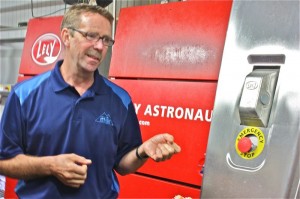
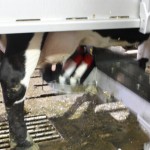
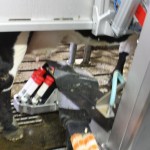
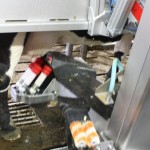
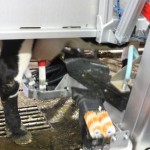
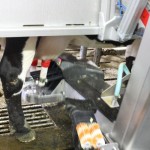
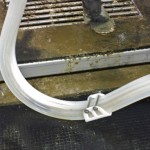
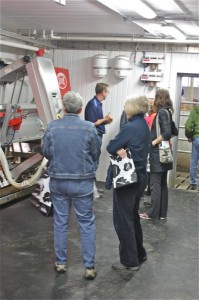
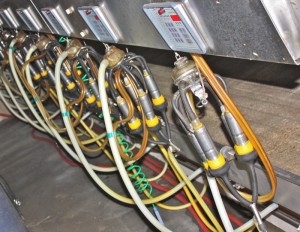








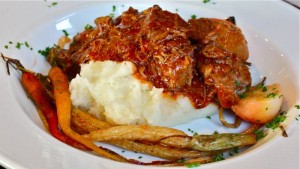
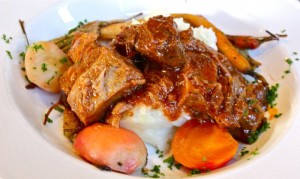
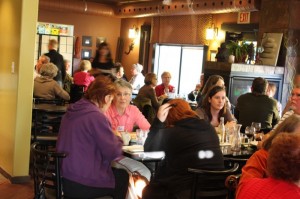
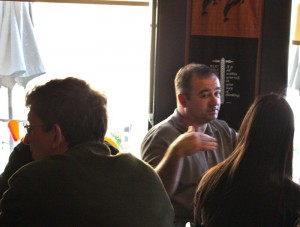



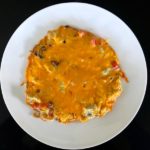
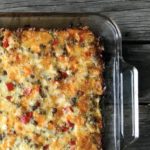
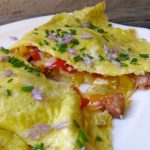
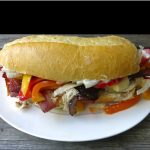
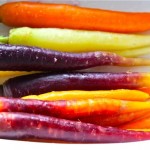
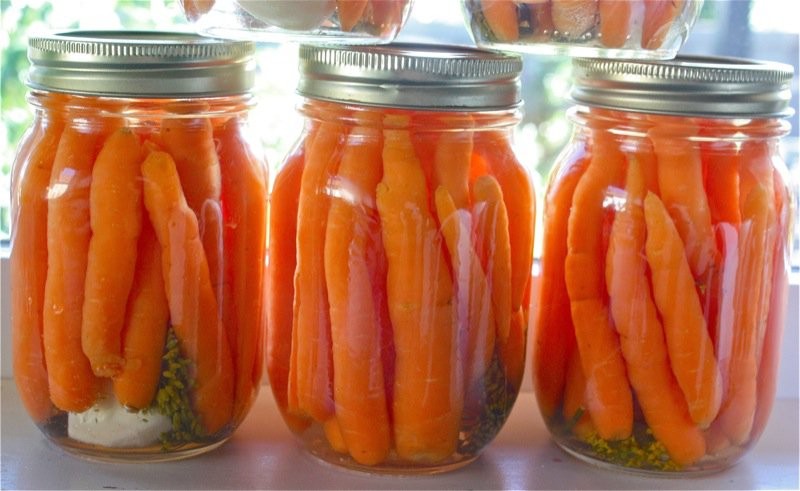





Thank you, Valerie, for organising such an amazing day for the attendees and the farmers.
I hope Slow Food can organise something like this again next year!!
Thea
First off I commend you for organizing such great food trips, if I lived anywhere near you I would be the first for any of your field trips…I would have loved to be in a room with that much cheese, I am glad you posted a pic of the sprinkler I always wondered how they kept the cheese at the perfect humidity. 8000 liter of milk, wow that is an enormous tank. The sandwiches look great, interesting post, great review!!
sweetlife
Well, I blogged about this Dairy Tour featuring people whose work is a labour of love, and Valerie, the thoroughness with which you chronicled and photographed our excursion, exemplies this. Thank you for your efforts, in conceiving and executing such a fine day, and now for this “academic” report. A deep bow to you!
Kathatine! I can’t wait to read about what you wrote!
🙂
Valerie
I wish I could join your food tour…..I’ve never been to a farm. 🙁 That’s a modern farm.
What a fun day out. I wish I was there just so i could say something stupid like, “hey, who cut the cheese”… yes, i have a very infantile sense of humour ;). Seriously, it looks like such fun.
Love the pic of you behind the cheeses.
*kisses* HH
What an informative post Valerie and a memorable experience for everyone. Your right what was Save On Foods thinking!
A fun tour and their cheeses sound terrific! Love the two last photos – so gorgeous!
Great day and wonderful reporting, Valerie. Thanks to Diane’s birthday present to me I was able to join you.
Such an interesting tour! I would have loved to nibble on the Gouda and Gruyère while listening to this man’s struggles as an immigrant !
The yogurt sounds interesting as well.You are such an energetic and determined organizer!
Valerie,
Thanks for the interesting post! I have always wanted to visit those places. Also I adore the Eco Cafe. When I moved to Wetaskiwin from Vancouver I was so happy to find that place that I went almost once a week for lunch. They used to have a fire cracker salad which was a spicy cabbage slaw salad with small deep fried wontons. Sadly the last time I went it was off the menu.
Kudos for organizing such a wonderful excursion. A trip like this would have been dangerous for me as I’m always a bit unreasonable around cheese (I buy and eat too much.)
I wish I lived near you 🙂
xo
Nisrine
Valerie…aren’t you the energetic organizer and might I add a very detailed Foodie poster ;o) I felt that I was right there with your group!
Hubby works for one of the largest cheese companies here in Montreal…and believe it or not…I’ve still not had a chance to get the 5 star treatment! I’ll have to bring this up very soon.
Have a great week and flavourful wishes,
Claudia
I think it’s a good thing you left Kevin’s house Valerie, as I couldn’t imagine eating all this cheese after our Smoky Valley experience.
What a fabulous field trip, Valerie. I would go on every one you planned if I lived near you.
This was next best…your photos, the history and the cheese. Kudos to them and to you for organizing this.
What wonderful tours!! You did a wonderful job documenting it all… I almost felt I tagged along! ~ALison
wow! what a well organized tour Valerie! seems like everyone had a terrific time and learned a lot during this. the smiles on their faces are there for a reason. huge kudos to you for organizing such a wonderful event!
that robotic cow-barn sweeper reminds me of the little round automatic vaccuum that they sell at costco that vaccuums the house for you on it’s own.
we drove to calgary this past weekend and were able to take in all the beautiful fall colours. it was such a great drive to be able to point out the different colours of trees and different animals to K and L now that they’re older. a beautiful drive indeed.
Very nice detail, I felt like I was there.
You organized this trip! That is fantastic. I saw the ad in Tomato and contemplated going. I will have to go next year – if it runs again. Whenever I drive down to Calgary and pass the Bles-wold sign I am so curious
Kelley: Maria and I are starting a Culinary Classes Tour and Travel Business called Canada Eats. I will be continuing to do the tours from within the auspices of our company and will definitely let you know when the next one is!
🙂
Valerie
What a great post!
This is knowing where your food comes from by excellence.
I love going through pictures and imagine myself there – even if I’m 3 provinces away. Mental note to self – take lots of pictures next time I’m on a tour! A great way to show people an industry that is not often readily visible to the public!
Wow! Everything looks so amazing. I learned so much from this post! Mmmm. Cheese.
Wow, that sounds like so much fun. I’ll have to keep an eye open for another outing.
But, um, you can’t possibly mean this, can you? “the feces dripping out of their noses is quite off putting”
Surely, surely you mean “mucus”? How on earth would feces be dripping out of their noses?
You would need to be there, Katy… they were clean, but they are cows and they put their snouts in everything… it didn’t look like mucus to me.
🙂
Valerie
Eek! OK, I’ve seen a lot of cows, but those must be especially messy ones.
Thanks for the virtual tour! I live not far from the Sylvan Star Cheese farm and have driven past the beautiful Bles-Wold Dairy several times, but never had the chance to stop in at either. Now, thanks to you, I’m much better informed about what I’m missing!
Lisa!
You must stop by both. Sylvan Star actually has a store and a restaurant in it. I guess you saw that – but you can buy there butter there. If I lived close by, they would definitely know me by my first name. You must.
🙂
Valerie